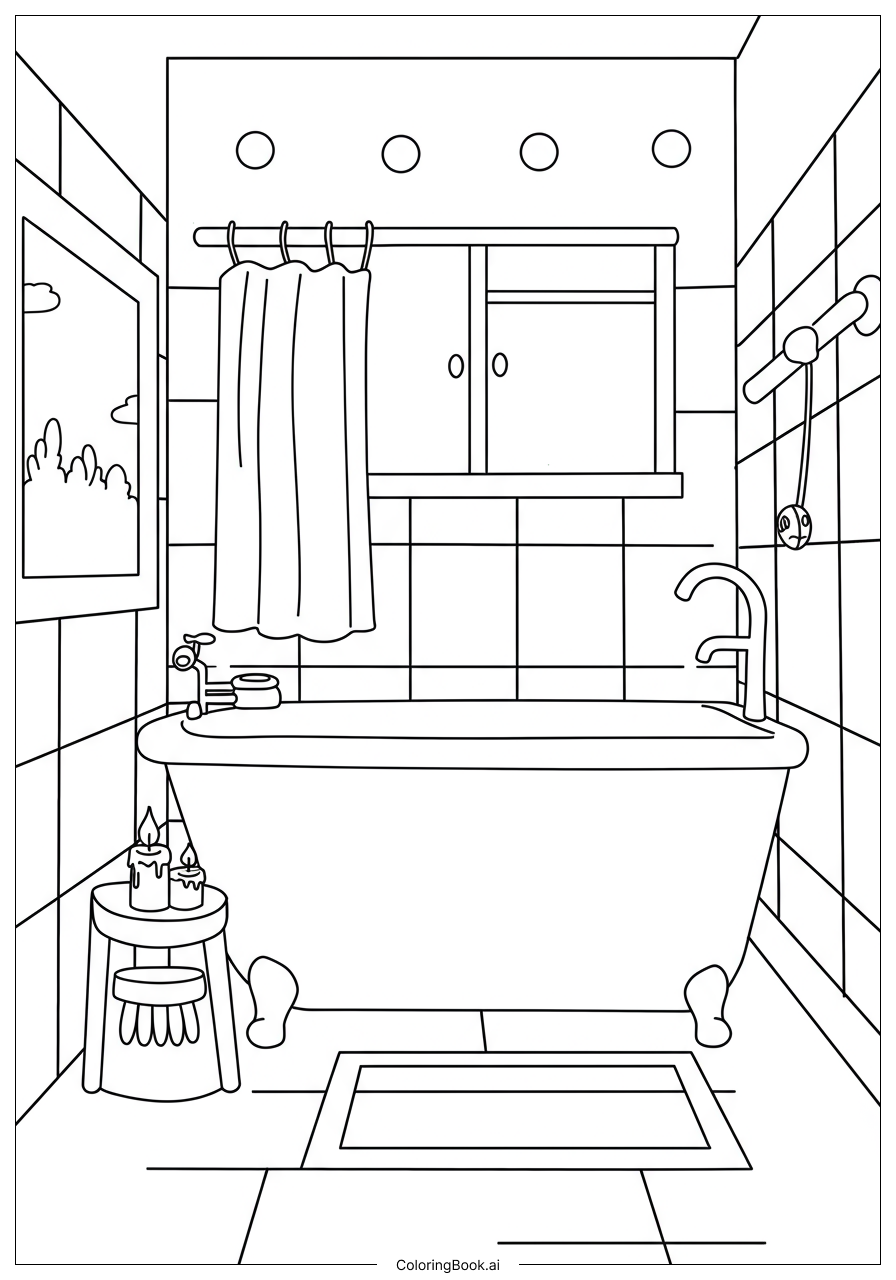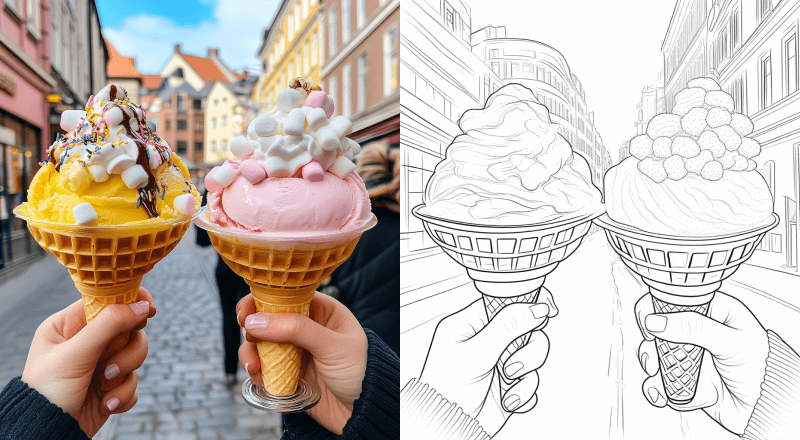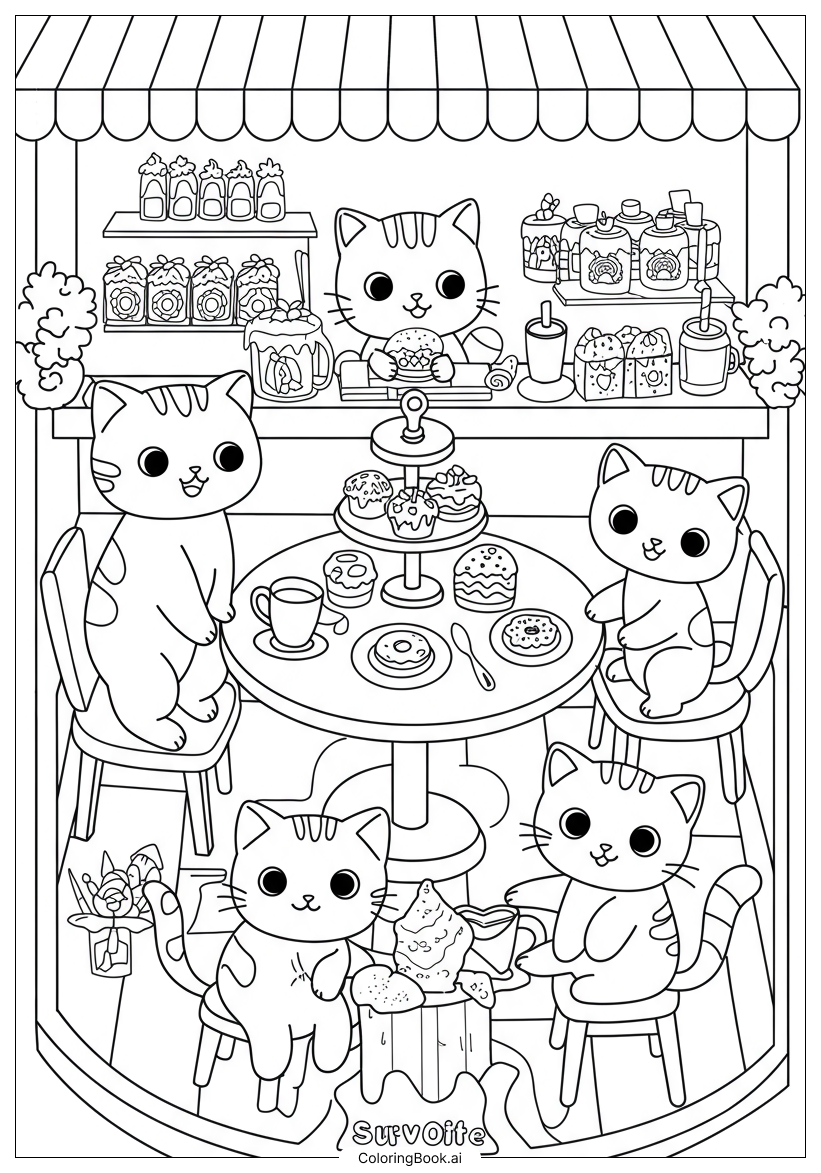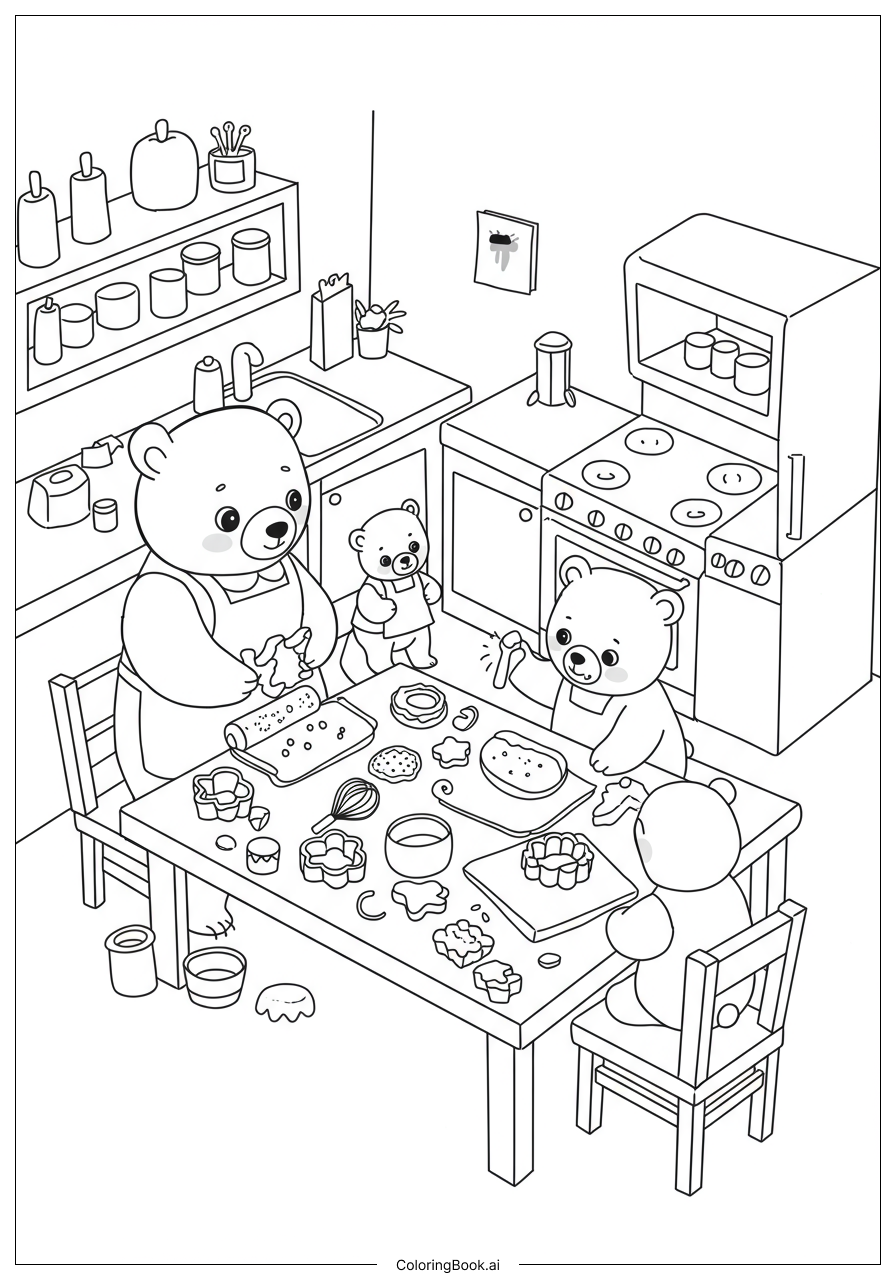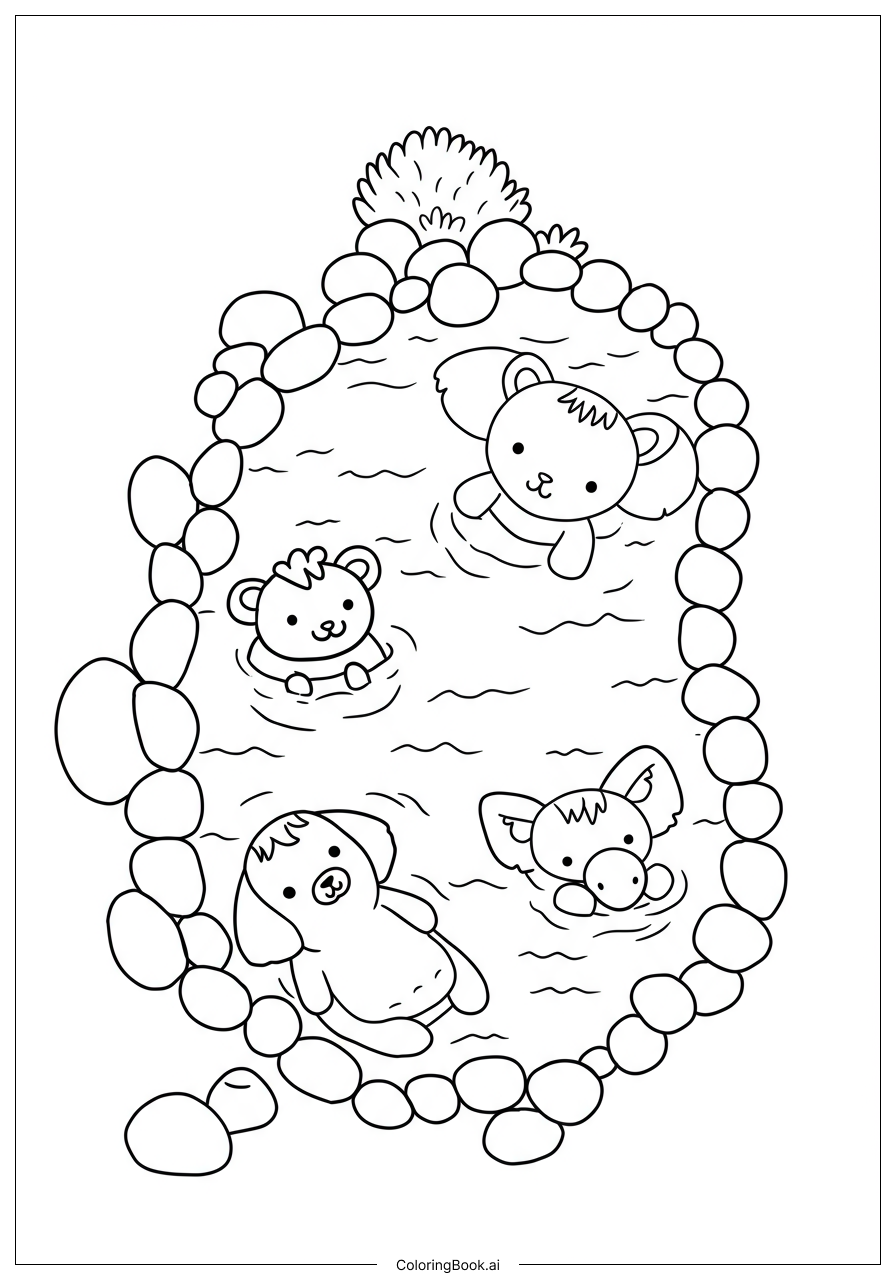Coloring tips: How to color Comfortable bathroom coloring page well?
For coloring this bathroom page, consider using calming colors like soft blues and greens for the walls. You can choose warm colors like beige or light yellow for the rug. Use bright, cheerful colors for the candles, such as orange or red, to contrast with the relaxing surroundings. For the bathtub, a pastel shade like mint or pale pink can give it a classic look. Encourage children to experiment by mixing colors and adding patterns, like stripes or dots, to personalize their artwork!
Coloring challenges: Which parts are difficult to color and need attention for Comfortable bathroom coloring page?
1. **Detailing**: The bathroom contains various details like the faucet, showerhead, and candle designs. These small areas can be tricky to color accurately, especially for younger children. They may need extra patience to fill in these spots without going outside the lines.
2. **Color Selection**: Choosing colors that complement each other can be challenging. Children might struggle to find color combinations that create a harmonious look, leading to frustration.
3. **Shading and Highlights**: Adding depth to the bath scene by incorporating shading and highlights is often complex. Younger artists might find it hard to understand how to use lighter and darker shades effectively.
4. **Patterns**: The tiles on the walls provide an opportunity for fun patterns, but creating designs can be daunting. Kids may need guidance or inspiration to fill in these areas creatively.
Benefits of coloring books: Advantages of drawing Comfortable bathroom coloring page
Coloring this cozy bathroom page offers several benefits. It can spark creativity, allowing children to make choices in colors and patterns. This activity enhances fine motor skills as they grasp crayons or colored pencils. Coloring can be a calming experience, promoting relaxation and stress relief. It also provides an opportunity for kids to express their emotions through color. Additionally, it helps develop their ability to focus and concentrate, particularly when working on larger areas or intricate details. Overall, this activity can support both artistic development and emotional well-being.
